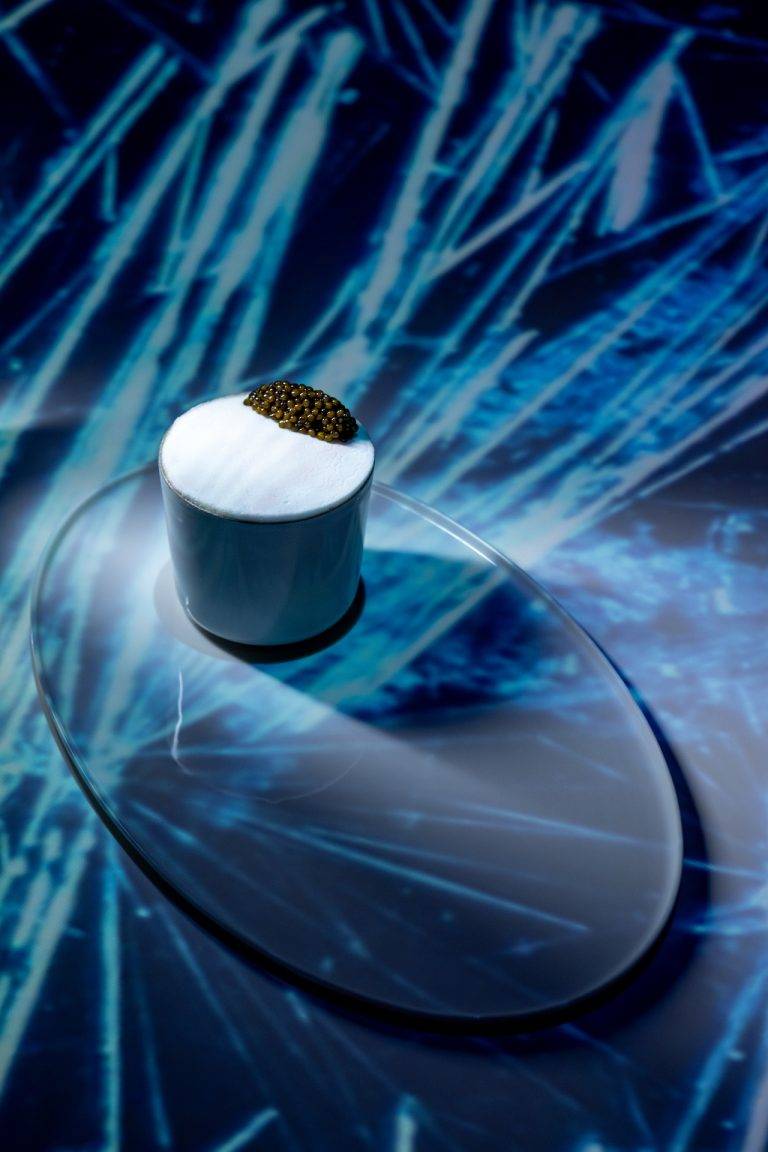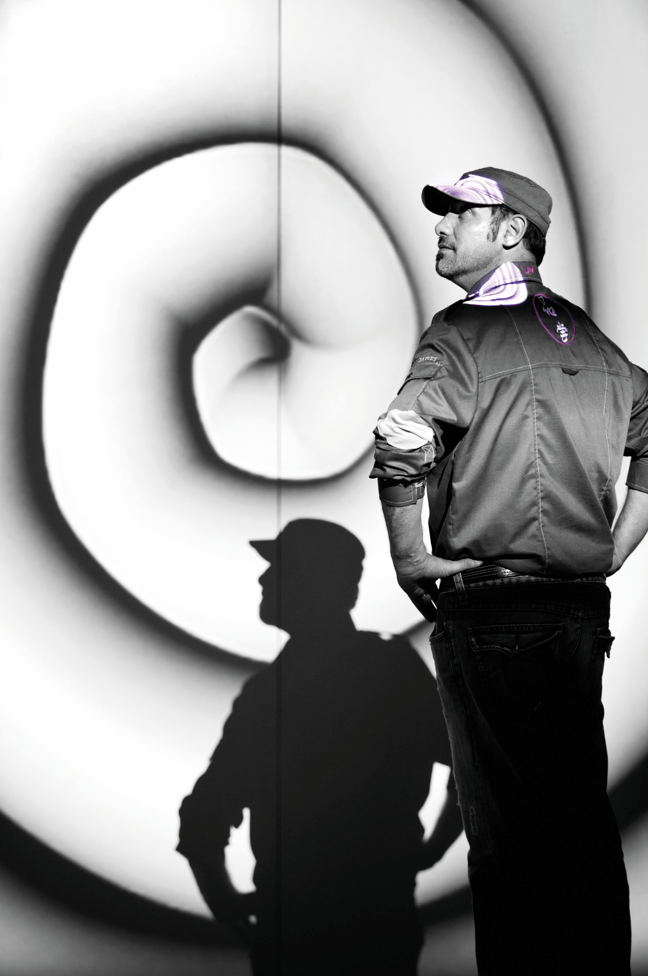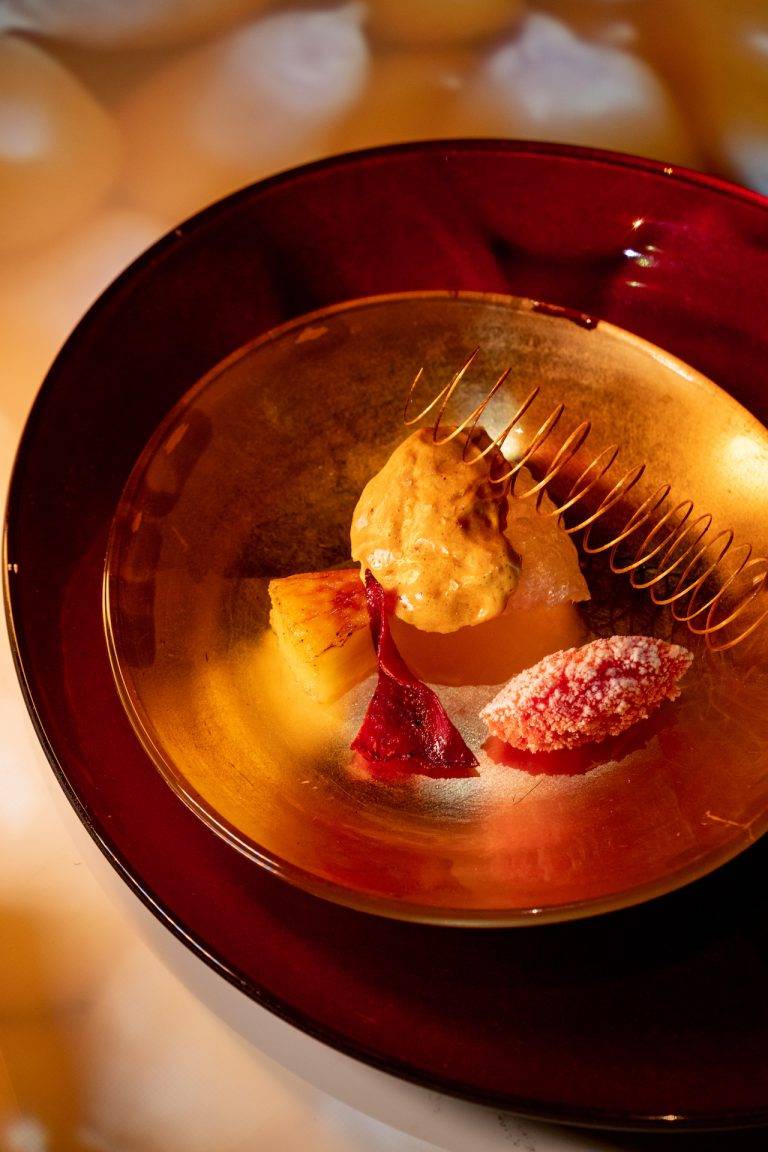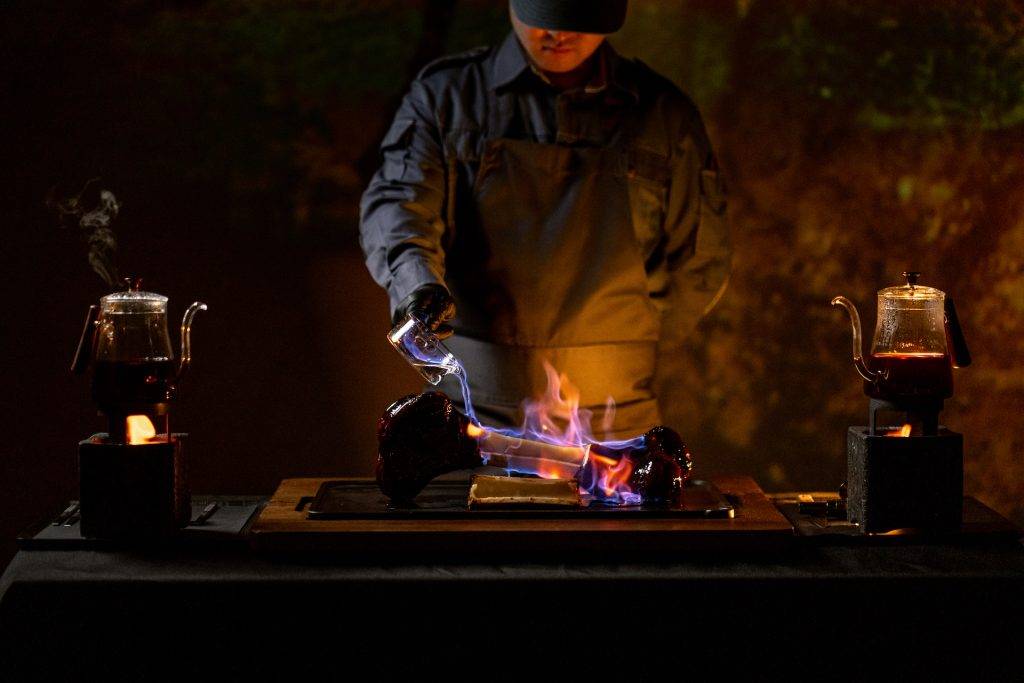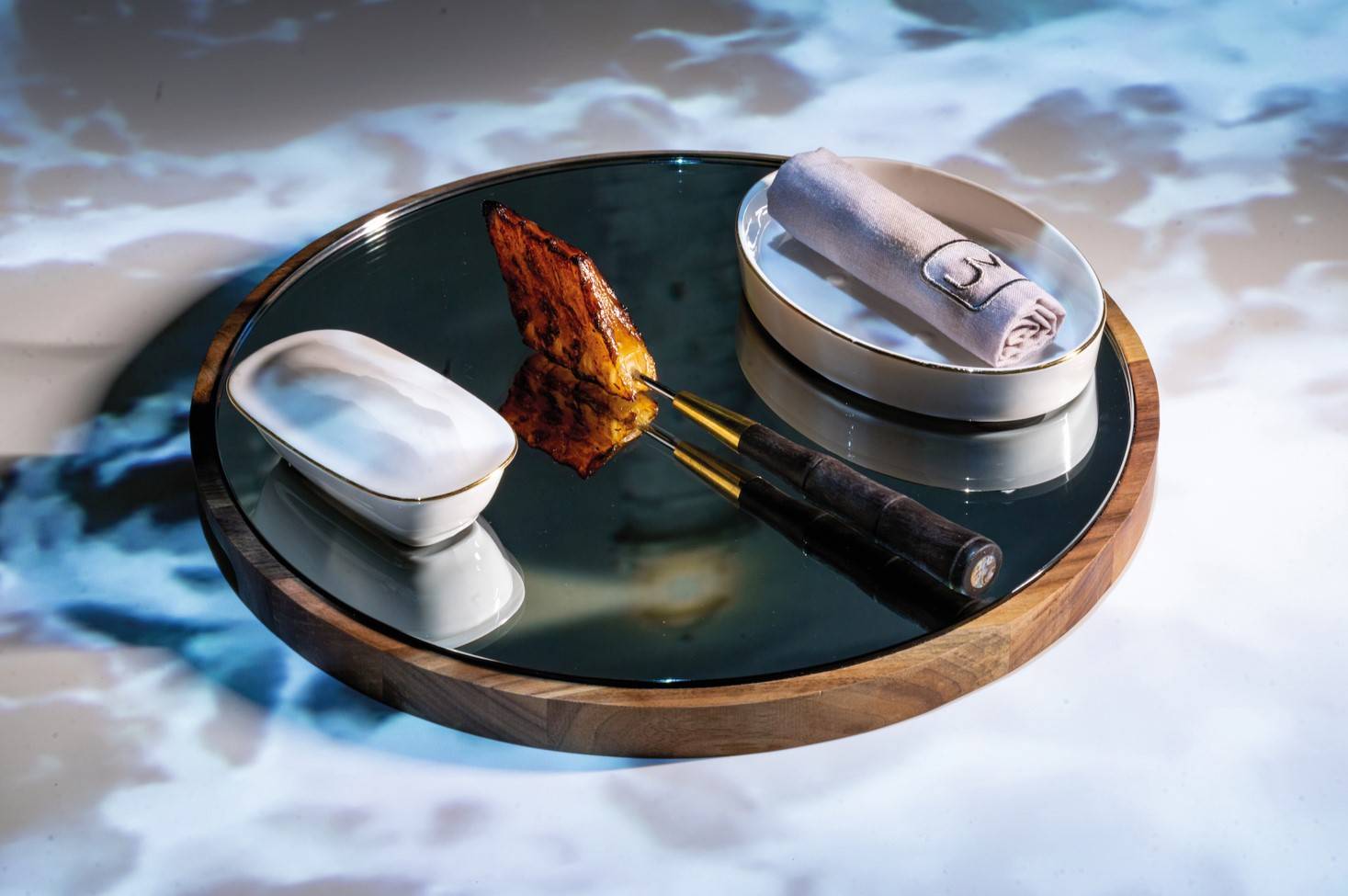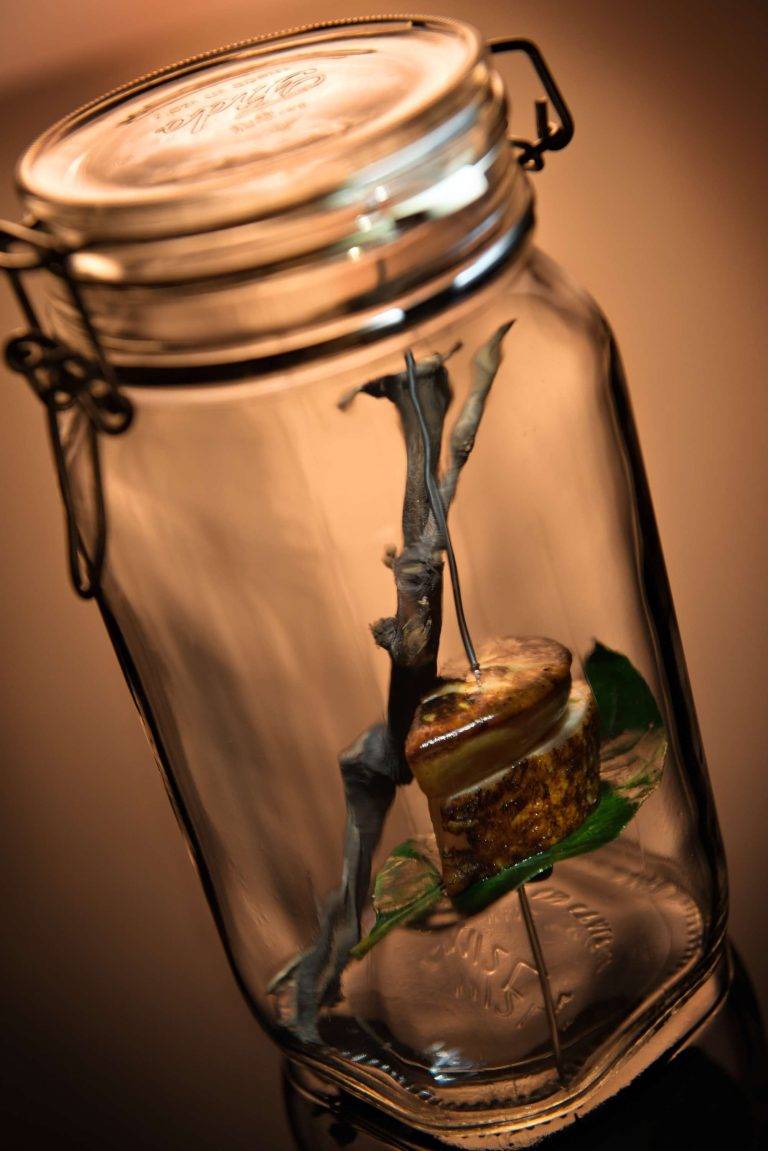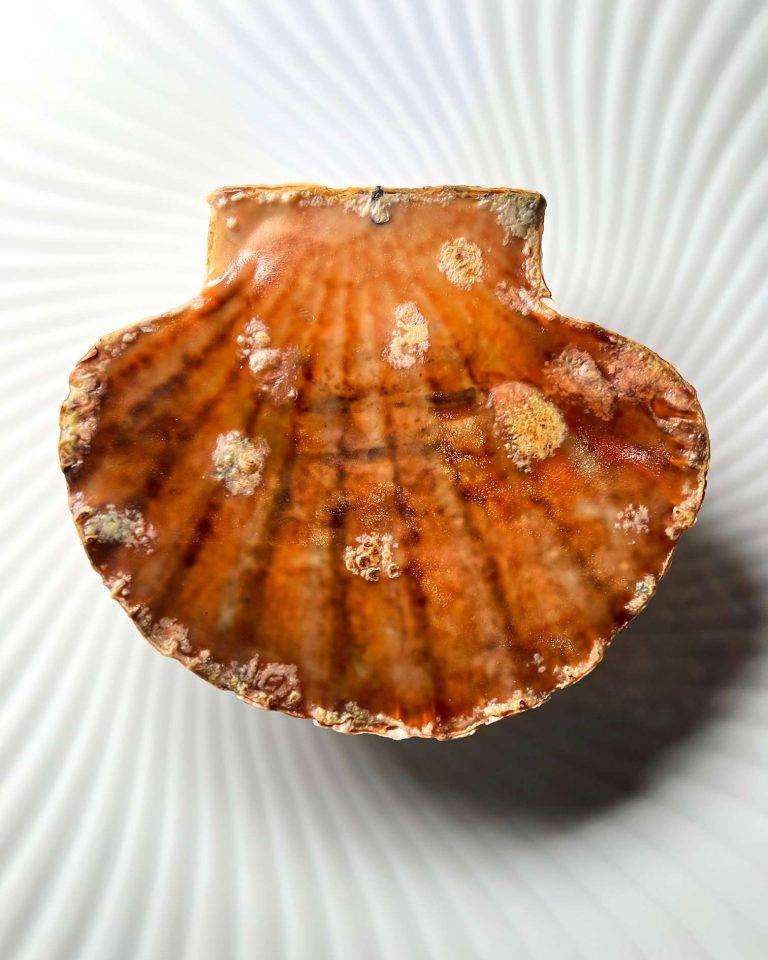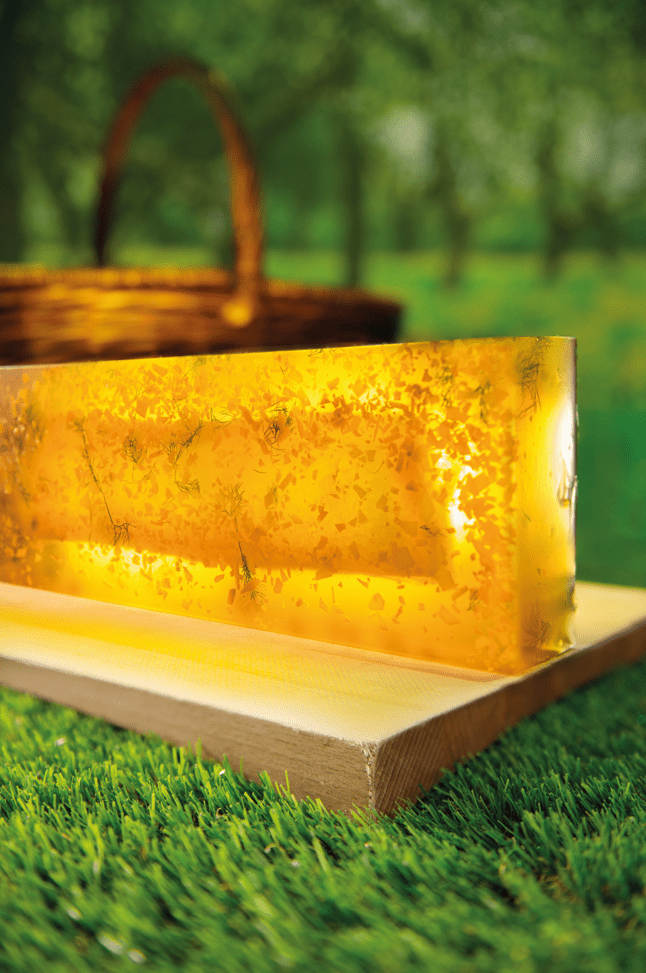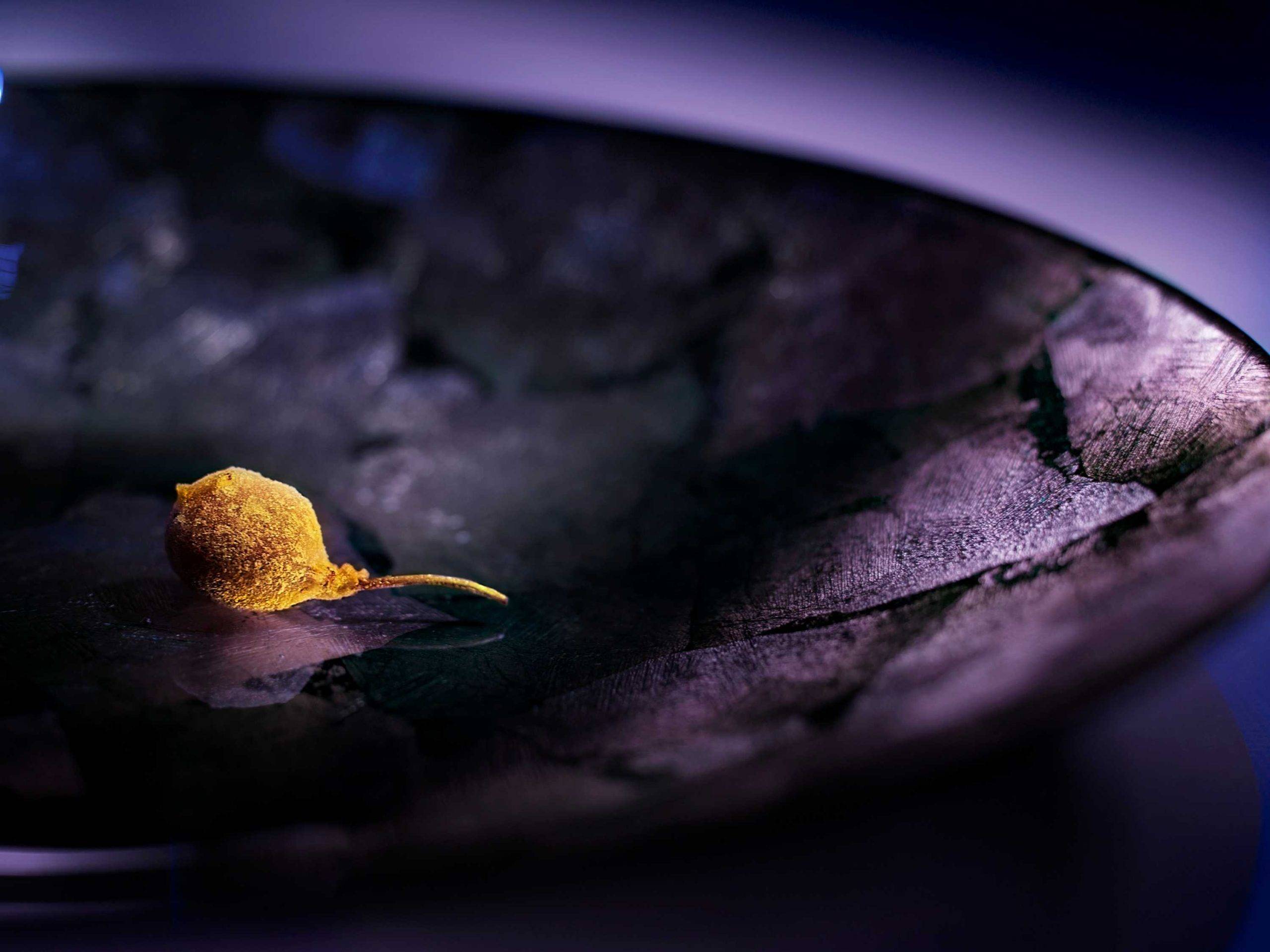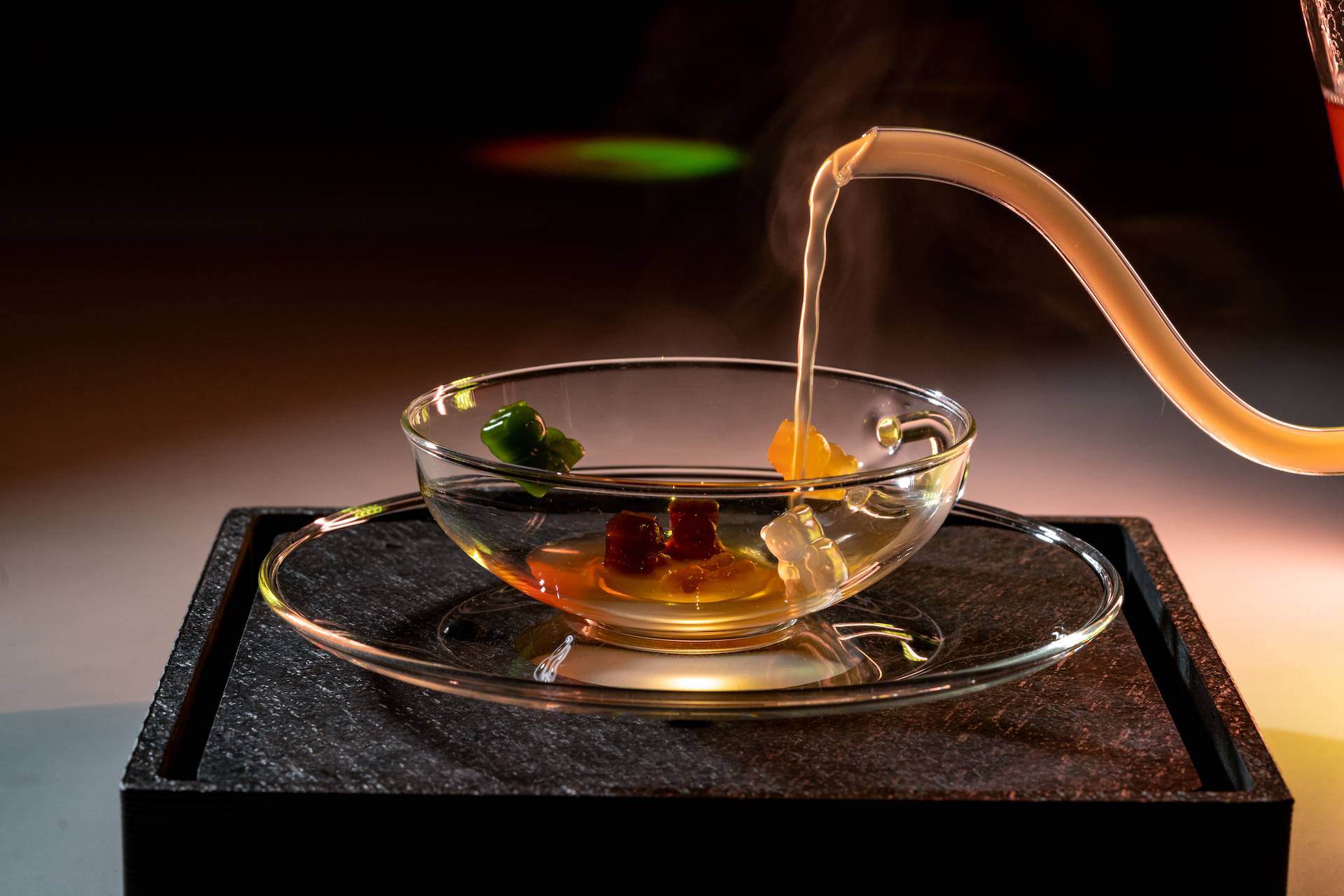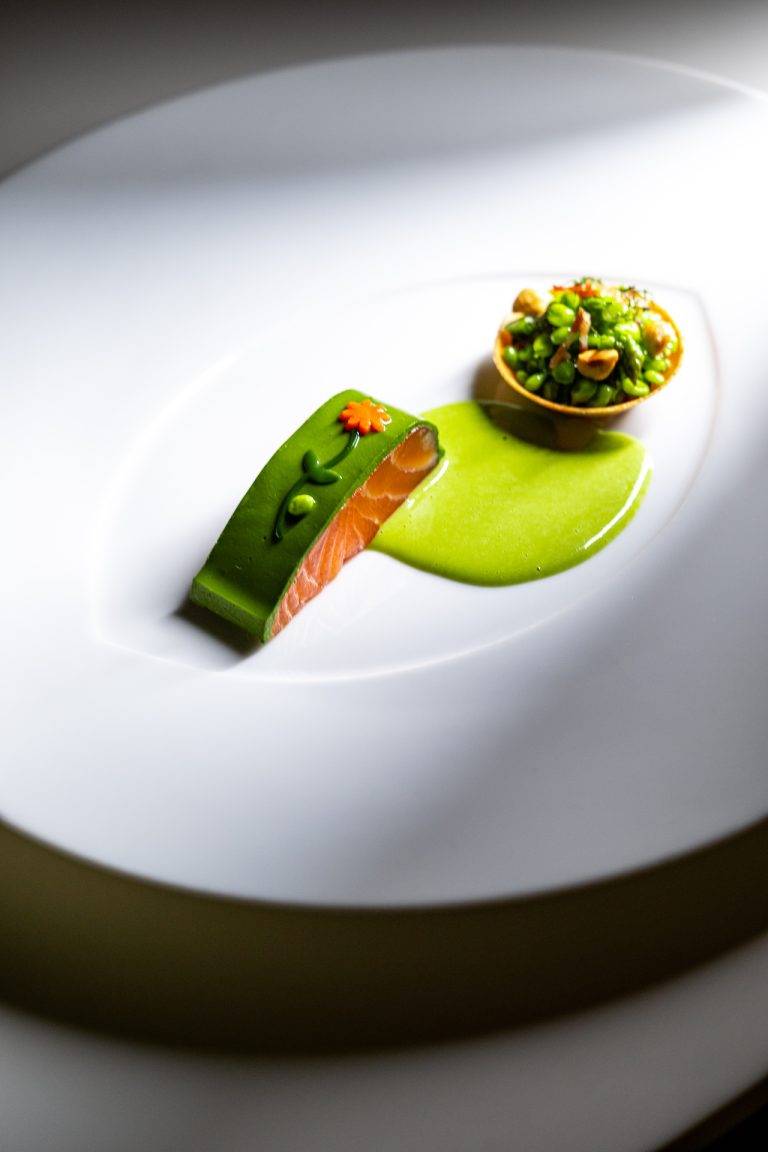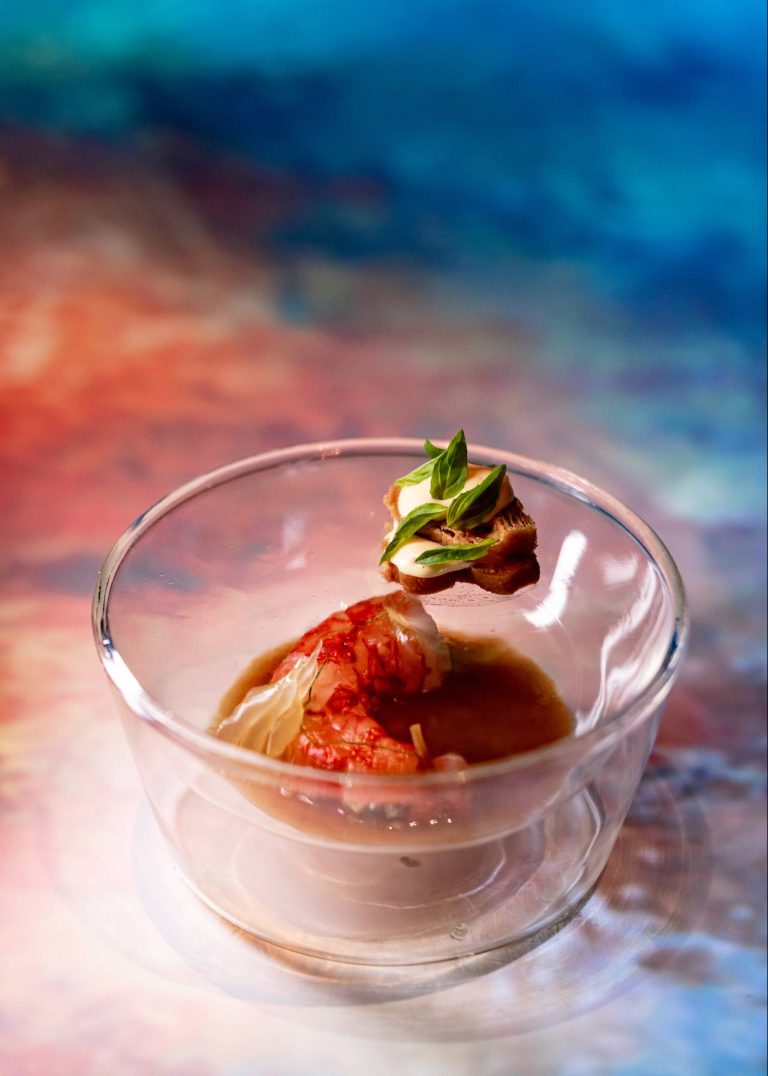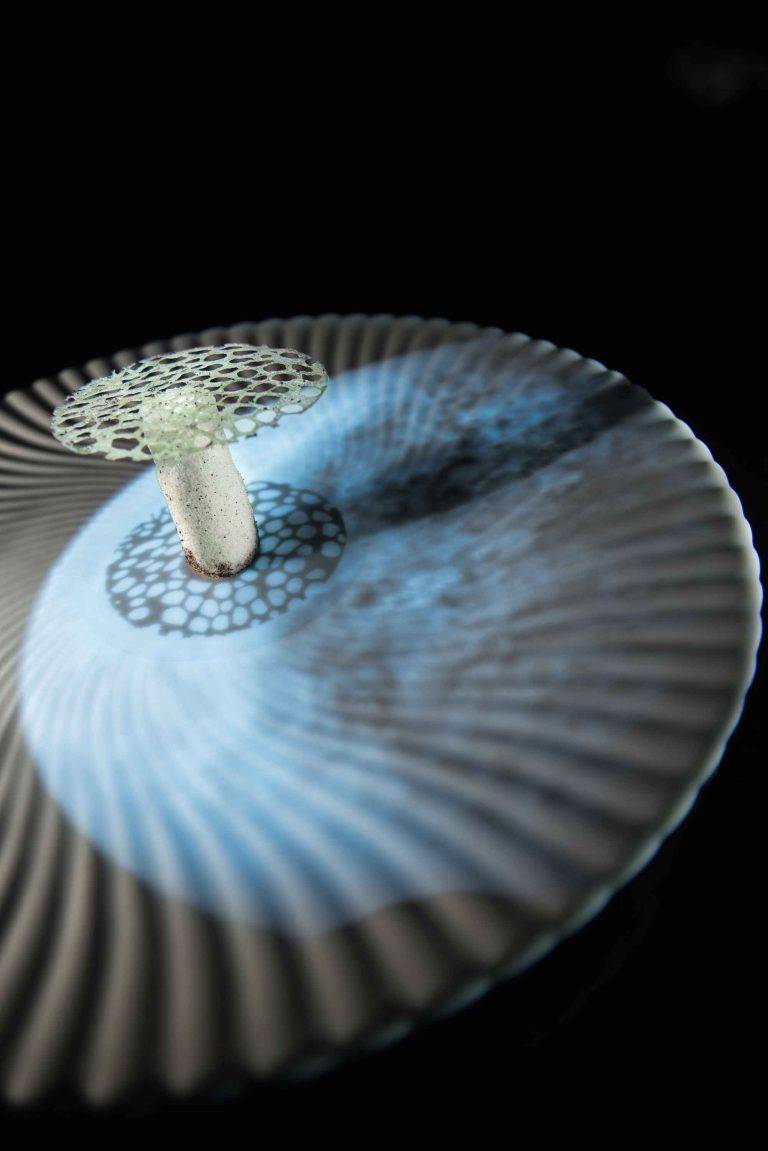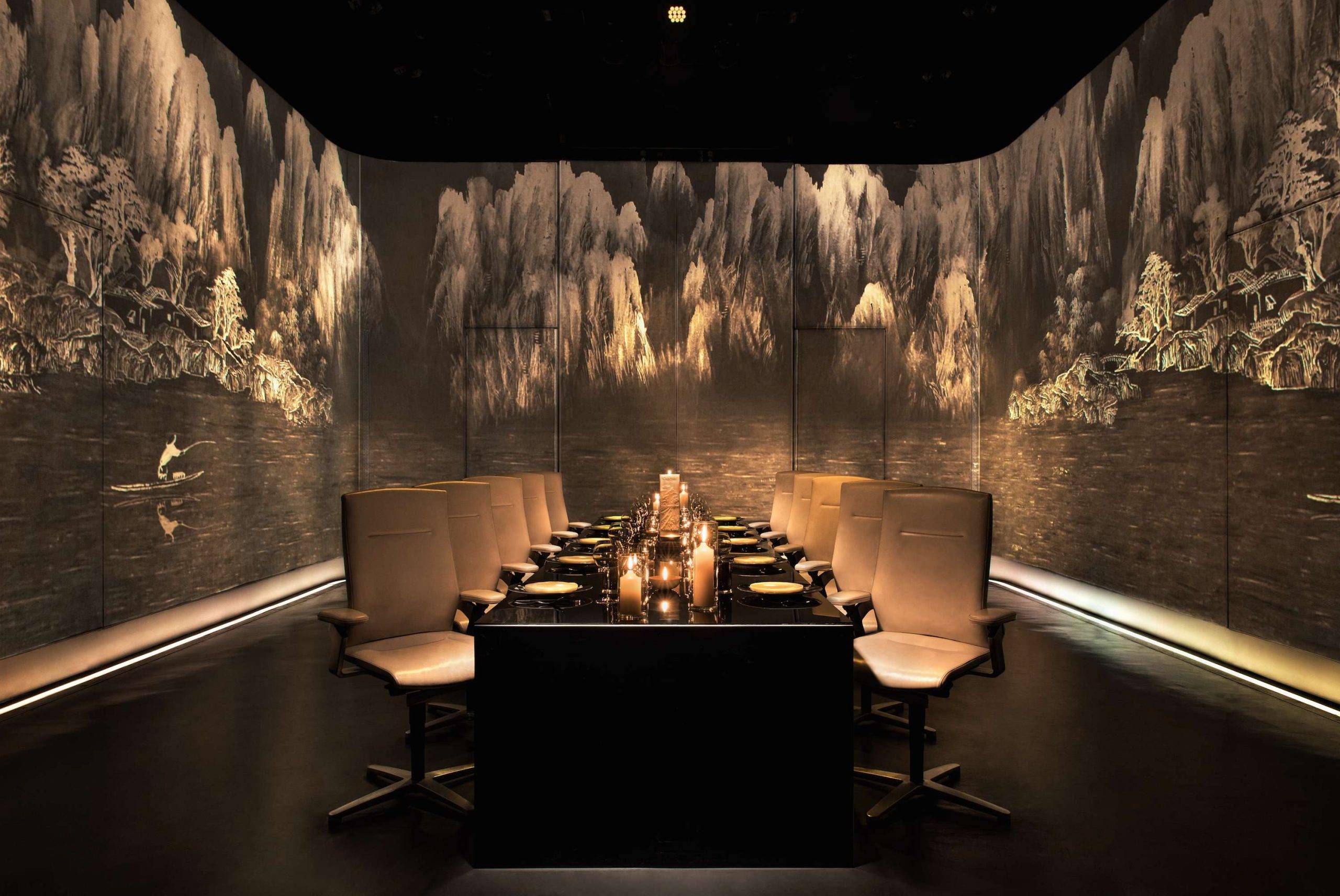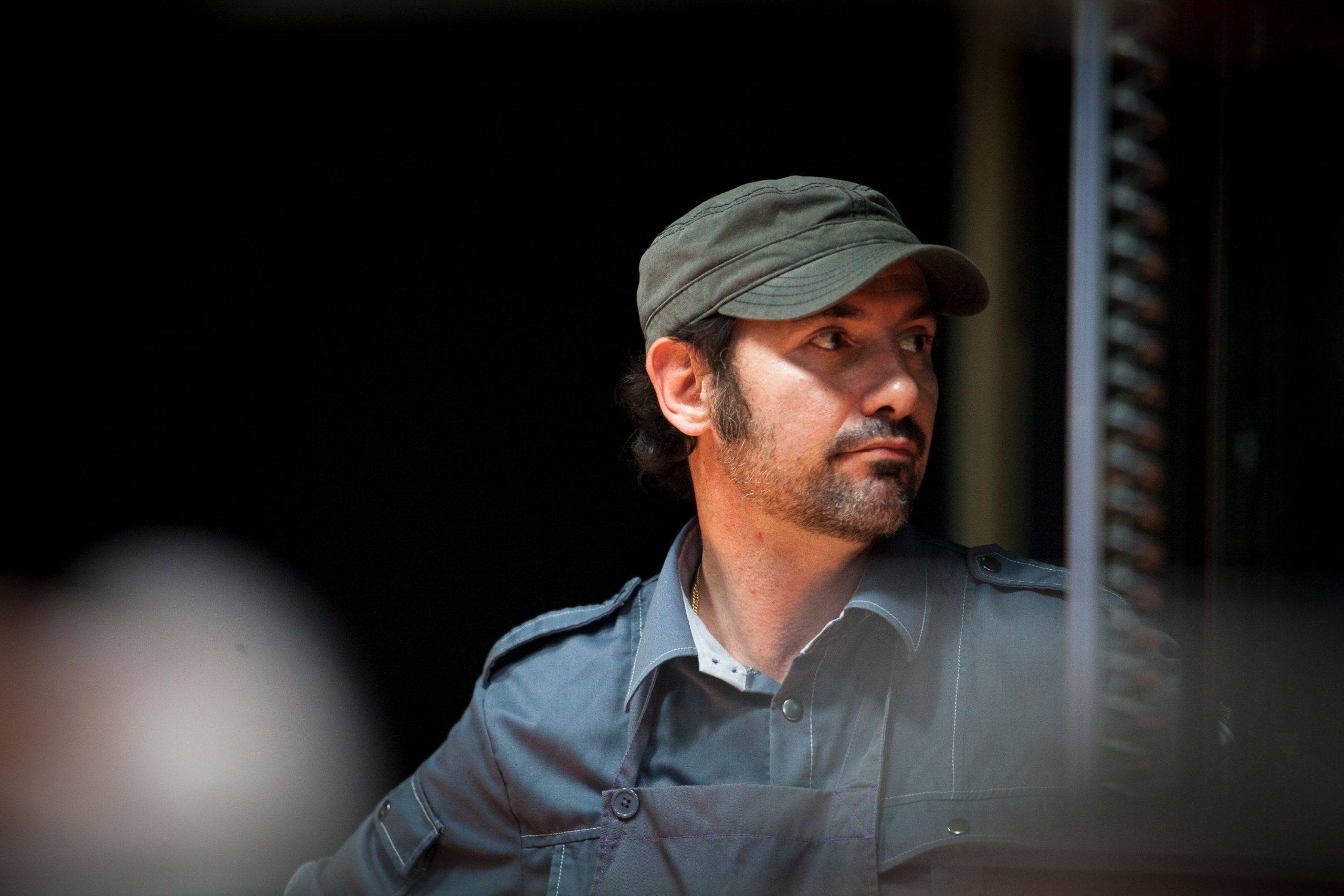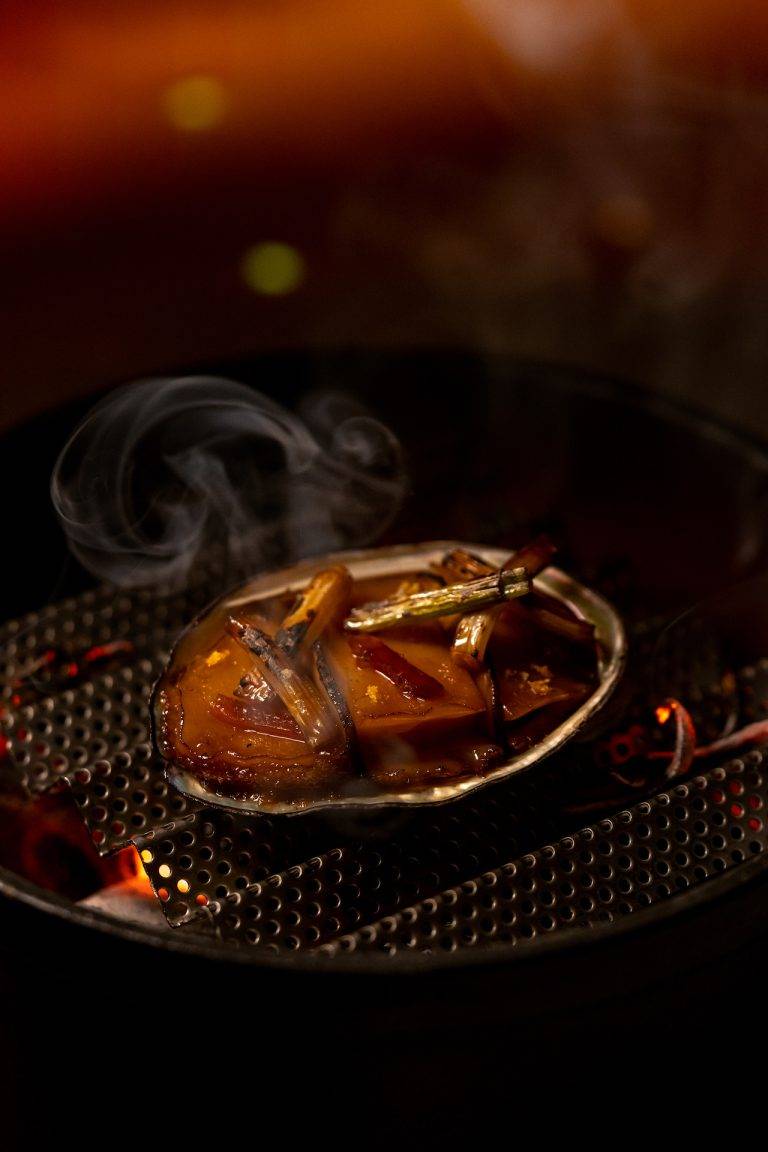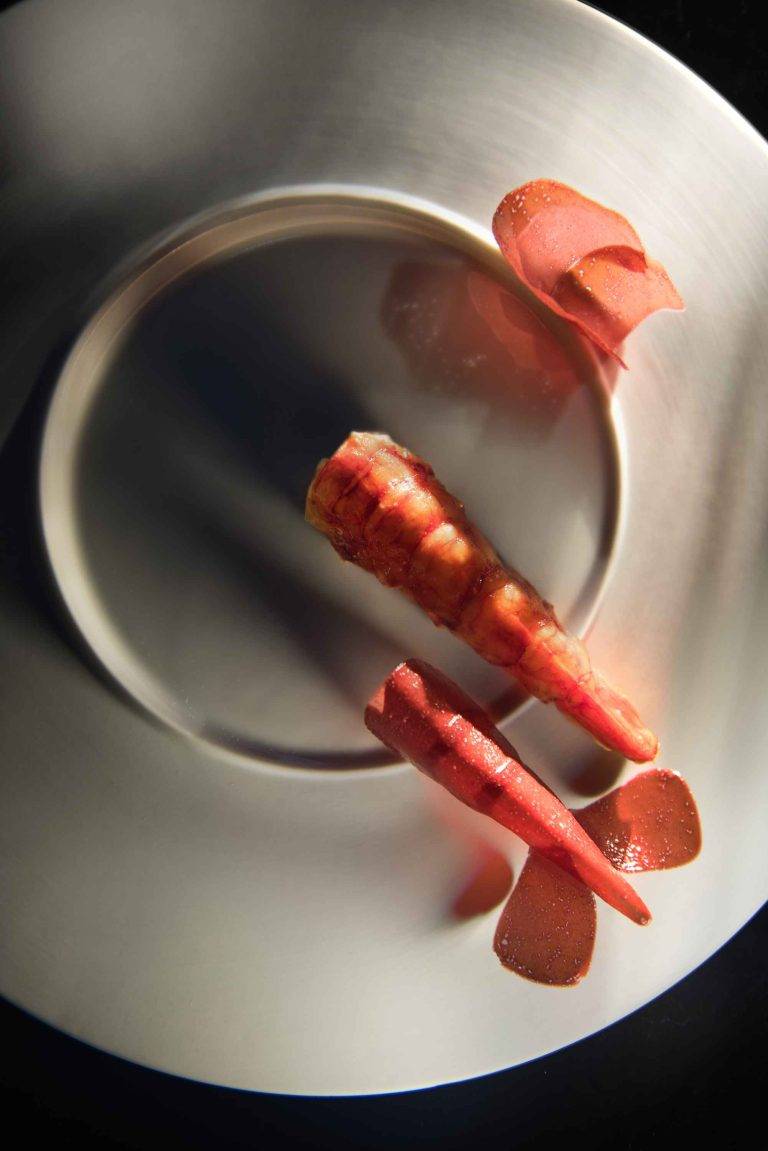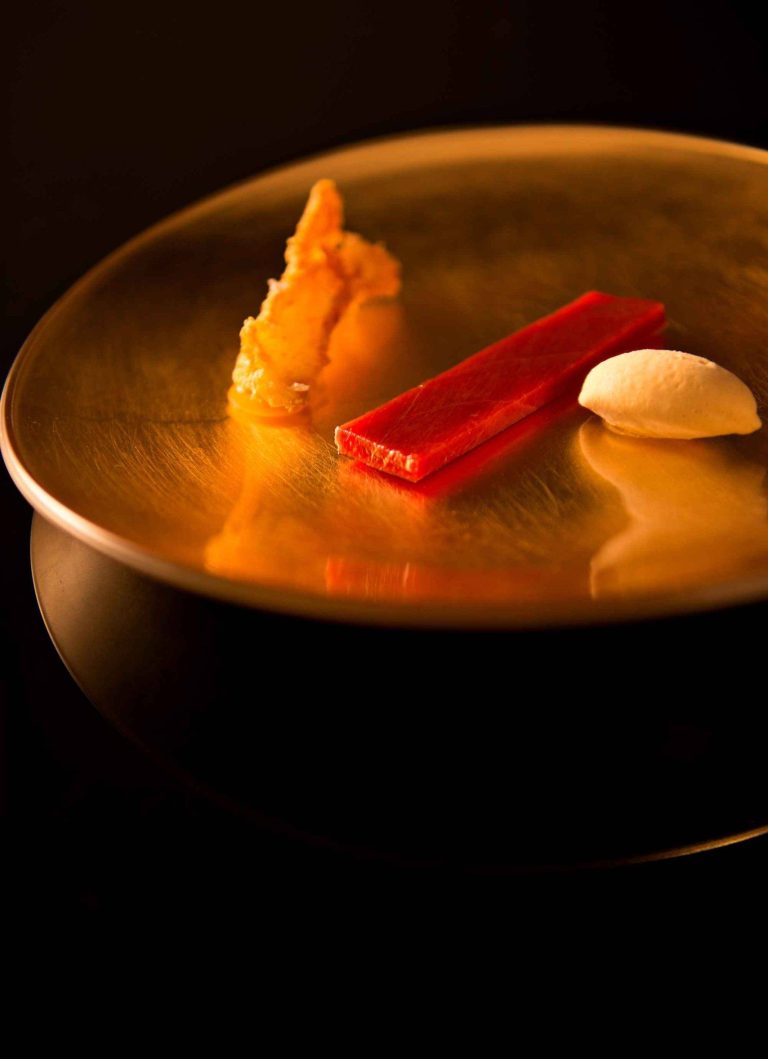Having followed Paul Pairet since the early days of opening Ultraviolet, it’s clear that this type of chef doesn’t come along very often. Steadfast in his dedication to an essentialist philosophy about what food and hospitality should be, his three-starred restaurant continues to be recognised for its daring experimentation, inspired dishes and, above all, its unique approach to the concept of taste.
After travelling the world with his craft – Paris, Hong Kong, Sydney, Jakarta, and Istanbul, Paul landed in Shanghai, a place that would finally allow his creativity to shine in a way that was true to him and his natural culinary style.
“The move to Shanghai was originally to open Jade on 36, a fine dining for Shangri-La. It was a great chance to find somewhere where I had the freedom to express myself. It was important for me to find this space at that time because the field would have been much narrower if I had stayed in France or Europe. The move to Shanghai just happened to be the right place and at the right time for me to make sense of my career and facilitate my journey moving forward.”
Having conceived the preliminary idea for his restaurant concept in Australia in 1996 and coming close to opening a softer version in Paris with Baccarat in 2002, Paul finally opened the 10-seat restaurant Ultraviolet, in 2012.
“Without sounding conceited, Shanghai is also a place with the energy to support a project that was a bit forward-thinking at that time.
“The early trials were much different from what we have now; it was just a simple table for 12 guests with dimmed light and a little music focused on each dish. I was a bit pretentious at that time, having a beard and thinking that I would play Jesus Christ by the end of the ‘Last Supper’.
“Now, we try to be a restaurant that is a good place to enjoy something more conceptual and edgy but also a place where the food has substance. As we say, Ultraviolet is avant-garde but figurative: with flesh and bone.
“Equally, although the layout may have slightly changed over the years, the core concept of Ultraviolet remains the same. I believe that to cook at one’s best, you need to get rid of the constraints of a classic restaurant, that is to say, à la carte. Á la carte gives the guest a lot of freedom, but it constrains the cooking and prevents it from flowing naturally.”
By this, Paul is referring to how food is pre-prepared or put in cold storage just in case someone might order it. He believes cooking should be more natural and something prepared freshly in the moment, not something cooked, assembled, and served according to an acceptable timeframe for typical restaurant standards.
“As clever as mise en place is, especially for Michelin-star restaurants, this is somehow different from the natural way of cooking. The most organic form of cooking is inviting people over for a meal, and you cook and serve at the peak of the dish. It is a huge asset for a chef to be able to cook or to impose a dinner menu and to also be able to control the time.”
With this in mind, Paul wanted to find the freedom and fluidity of casual hospitality while delivering a truly memorable and avant-guarde experience. By combining specific smells, textures, flavours, and techniques to stimulate the senses and call upon our subconscious, he embarked on what is now one of the world’s most unique and immersive dining experiences.
“In terms of my cooking style, I haven’t really changed at all. Since we opened in 2012, the experience has remained the same. Naturally, the dishes have changed, but the pattern is the same. The menus are very complicated – the last menu was 4 years in the making – but the ingredients, the principle, and the way of thinking are all exactly the same, and I intend to keep it this way.
“This field is endless, so I am naturally evolving without trying. I am competing with very long menus in a very transient industry so that in itself forces me to constantly change and find new ways to continue to express the same message.”
Rather than trying to change Ultraviolet to fit the changing demands of the industry, he has instead chosen to use it as a springboard to develop elsewhere. This has translated into his other restaurants, Mr & Mrs Bund and Polux, where Paul and his team can explore alternative menus, formats, and concepts but still based on the same fundamental approach to the cooking and eating experience – to find a balance between entertainment and intimacy, where the level of taste and cooking is par excellence.
“The nature of Ultraviolet is very dissimilar to most other restaurants, so it is not something that crosses over into my other restaurants, nor would I want it to. At Ultraviolet, we have a whole ‘scenario’ for every dish, which includes tailor-made lighting, music, and ambience. The goal of every scenario is to create an atmosphere dedicated to each dish, which naturally prolongs the impression and memories of what you are eating.”
Although its approach is spectacularly individual, Paul makes it clear that Ultraviolet is still a restaurant, and food remains paramount to the experience. Ultraviolet proudly stands for all the classic characteristics of a restaurant but has extended the capacity to illustrate what a dish can be.
“When you are in a typical restaurant, the chef also has a clear intention of what they are cooking, how they will plate the dish, how they would like people to feel etc., but due to the constraints I previously mentioned, they cannot control the context of the dish. We have the same objective, but we have combined the two so that the chef’s intention is mirrored in the delivery and atmosphere when you eat the dish.
“It’s hard to describe the experience of Ultraviolet. It sounds cliché, but it really has to be witnessed to understand that there is a much higher level of concentration from the guest because we prepare and control the entire context of the dish, which is generally not possible in other restaurants. For example, if you serve a mushroom in a kind of autumnal setting, with the right melancholic music, moody autumnal lighting etc., your experience of those flavours, smells, and textures are all exaggerated.
“I would say the common denominator between all my restaurants is level of taste. The difference is that Ultraviolet has the same menu for a long time, and any changes mean people can expect something new for every dish, but not necessarily the ingredients. We go only by one element and never use more than this because it wastes creativity that can be used elsewhere. So this could mean a new technique, the concept of the dish or the association of taste, but we don’t focus on a seasonally changing menu.”
By removing unnecessary elements in expressing the idea of the dish, Paul can better focus on the intensity and flavour of what is being served. He does this by going to the roots of why something becomes a classic: what are the essential reasons or ingredients that have made it so popular, and uses this to create an alternative version of those elements.
He admits that he is not subtle with his approach to food, and, therefore, the plate reflects this. The aim is to draw people into what they are eating, so they can truly embrace the dining experience and delve into what he calls “psycho taste”: an exploration of our preconceived notions of taste based on memory, imagination, experience, and culture.
“As a restaurant, we are not always perfect or precise; even Ultraviolet has dishes that are not the most sophisticated, but we make sure we use the same essentialist philosophy. This ensures that the dish is reduced to the most essential elements needed to convey what we are trying to express. Our aim is to drive the psycho taste and use our subconscious to create a tangible effect on what we are eating.
“We also don’t work with the traditional philosophy of seasonality in the sense that we change the menu based on what’s currently available. The menu stays the same because the dishes are conceptual, and we adapt the ingredient requirements to wherever is producing the best quality for that time. If there is one element that is a seasonal element, like crab, for example, we will source whichever crab is tastiest and in season during the course of the year. But, we are not driven by this. The menu could be served from the beginning of the year to the end.”
One dish from the latest ‘UVD’ menu that demonstrates this idea perfectly is the ‘Bouillabaisse Nespressoup’. Encased within a Nespresso capsule that is placed into the Nespresso machine, guests are delivered an instant, concentrated Espresso-like Fish Soup, which is served with a sugar cube-like bread crouton to playfully mimic this everyday commodity that has reached cult status. This idea is not bound by seasons or locality but is a savorous expression designed to be thought-provoking.
Combining both a flavourful and entertaining experience, guests are immediately required to start thinking out what they are sampling in an entirely new way: What is this? How have they done it? What does it mean? The idea is that food isn’t just about taste; it’s about the emotions a dish evokes and how this correlates to our subconscious and the things that shape and influence our perceptions of what we eat.
“We follow the same curve that a traditional menu would use, starting slowly, crescendoing in the middle and then gradually peaking down to the end, but we just do this over 20 courses. “Each dish has its own distinct personality, which at times can even be quite extreme in its flavour, but it will be evened out in whatever comes next. The dishes are not supposed to be self-contained elements, offering a complete balance of flavours. In fact, every course is designed to compensate for what came before and introduces what’s to come because it’s part of a larger narrative.”
Each dish at Ultraviolet is highly personal, and Paul explains that there is a reason behind everything on the menu. These aren’t random ingredients pulled together but a concept shaped and moulded for up to years before it appears in the final cut.
“There is always some liaison with my travels, memories, or daily life that filters into the dishes I create. In the case of the Nespresso capsule, we were working with them, but the concept also fascinates me. I wanted the machine to be able to produce something else, something unexpected, so this is where the idea came from.
“Sometimes, even when I create a dish, and I don’t think there is a reason, later on, I realise that there was a link to something that has happened to me or that I have experienced at some point.”
With menus at Ultraviolet taking up to four years to develop, Paul has taken a mythological approach to the creative process. He divides the year into periods to work on projects and time dedicated to being in the kitchen, but he doesn’t see the latter as a crossover with the time spent devoted to developing new dishes.
“The period spent specifically creating new dishes is incredibly satisfying but very taking. It’s a hugely draining process that requires my full time and attention. We like to take this structured approach because it means we can be absorbed entirely and spend quality time creating and not distracted by everything else. After I have developed a menu, I give myself at least a year off of creating before I have to think about it again.
“I also don’t tend to feel the urge to create more dishes for the menu after this period because it’s such a thorough, creative process. Since 2012, we have created five menus, which are still available to guests. They don’t replace the last; just offer an alternative collection”.
Although his commitment and hard work can’t be denied, Paul still humbly places some of his success over the last decade on luck. The idea for Ultraviolet was 15 years in the making and even failed to take off in a few of the earlier launches. He feels that it was just a lucky combination of factors that finally allowed Ultraviolet to have its moment and for his dream to become a reality.
“The highest point in my career will remain the day I opened Ultraviolet. Although I have had Ultraviolet for a long time now, which is the ultimate goal for some chefs, those first days of opening Ultraviolet were my dream come true.
“Even a few weeks before opening, I still didn’t feel like things were entirely right. We didn’t realise at the time that we needed to add music, but once we did this and adjusted some final details, it was like everything just clicked. To this day, those first dinners and that first service remain some of the best moments of my entire career.
“I feel proud to have created a three Michelin star with a concept that is not run-of-the-mill fine- dining. It’s one thing actually getting the three Michelin stars, but it’s another achievement entirely to get that with a unique concept like Ultraviolet. Not only did my dream come true, but it was also formally recognised by the industry, which is a tremendous achievement for both my team and me.
“We always hope that guests are left with an impression. That the food has both evoked and created memories. I don’t believe something can be beautiful unless it leaves a trace. We can’t control this, but we hope that an experience leaves a lasting mark in their minds.
“Since the opening, we haven’t tried to touch a thing because the recipe was just right. I love the experience of opening other restaurants and doing side projects, but I have no need to express myself in any other way because I have everything I need with Ultraviolet. There is no reason to change what I am doing and why I am doing it because this is who I am, not what I do”.
To find out more about Paul Pairet and Ultraviolet, contact the restaurant using the below details:
Ultraviolet by Paul Pairet
Web: uvbypp.cc
Email: info@uvbypp.cc
Online Bookings: uvbypp.cc/bookings
Facebook: @UltravioletByPaulPairet

